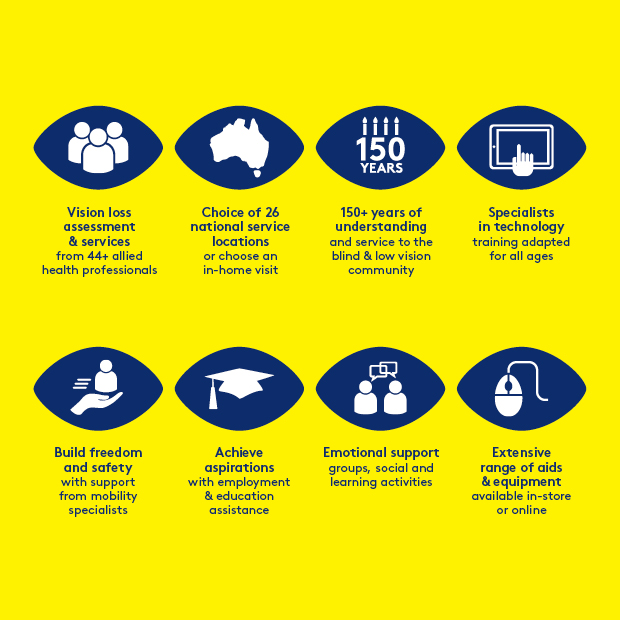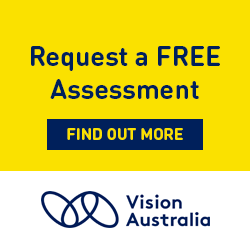Am I eligible for Government assistance?
What is the NDIS?
The NDIS is the National Disability Insurance Scheme. The NDIS is here to help you achieve your goals and it is focused around enabling you to live your life. Vision Australia can provide support to you throughout every stage of the NDIS process.
How can Vision Australia help?
- GETTING YOUR PLAN READY
Vision Australia can help you work through your requirements so you can know what’s available and get what you need to achieve your goals - NDIS PLANNING SESSION
You can access whatever level of support you need throughout your NDIS planning process, with access to a Vision Australia staff member at any stage - SELECTING YOUR PROVIDER
Vision Australia is a registered NDIS provider and the leading organisation for people who are blind or have low vision. They will be there for every step of the NDIS process.
Contact us
Contact us early and get the support you need. For more information on Vision Australia’s services call our helpline on O2 9053 4581 or email info@visionaustralia.org. You can also connect with our services here


